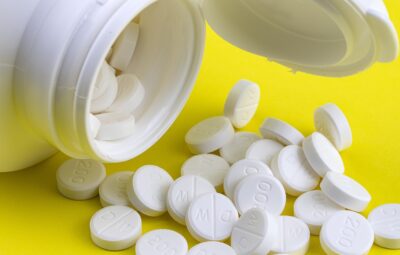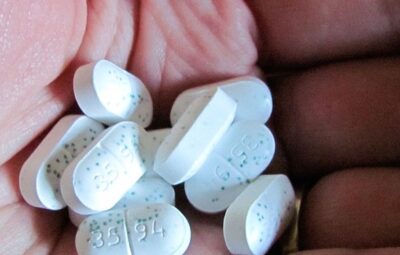There has been an increase in the occurrence of type 2 diabetes, as the global rate has gone from 4.7% in 1980 to 8.5% in 2014, as the World Health Organization has reported.
As diabetes increases, so do the various methods of treating it.
The aim of any diabetes treatment is to reverse or reduce any issues with blood sugar levels and insulin resistance.
This, in turn, helps improve blood glucose levels. Having excellent blood sugar levels is essential for people with type 2 diabetes to anticipate good outcomes.
Lessening the chances of having difficulties like cardiac arrest, hypertension, cardiovascular ailment, and other diabetes-related problems.
If someone’s diabetes is identified in its early stages, they may be encouraged to adopt a healthier lifestyle. Implementing nutritional improvements and physical activity can assist in naturally lowering blood glucose levels.
This article will explore the different therapies accessible for type 2 diabetes.
Managing Type 2 Diabetes
Maintaining your blood sugar at a balanced level is necessary in order to avoid any potential long-term issues like cardiac, renal, or ocular issues.
No matter what medications you are on or if you are on any, diet and lifestyle choices are essential to lowering the possibility of serious issues in the future. To learn more about methods of optimizing diabetes management through nutrition, have a look at the self-help material “Type 2 Diabetes Diet”.
The beginning steps for managing type 2 diabetes generally include consuming a nutritious diet, reducing weight if you are overweight, and engaging in regular physical exercise. If lifestyle changes do not succeed in reducing your blood sugar levels, medications will be used to help decrease them. Metformin is usually the initial medication prescribed, but it is possible that additional drugs might be necessary.
It is imperative to keep your blood sugar in check, but it is equally important to make sure that high blood pressure, cholesterol, and other potential risks are all kept at an acceptable level. Our separate leaflet about Type 2 Diabetes contains more information about managing other risks.
Precautions If You Are Unwell
Certain drugs typically prescribed to folks with diabetes may create difficulties if you are sick or lack liquids, particularly when dehydrated. These include:
- SGLT-2 inhibitors.
- ACE inhibitors (used to reduce blood pressure and protect the kidneys).
- Diuretics.
- Metformin.
- ARBs, which may be used as an alternative to ACE inhibitors.
Non-steroidal anti-inflammatory drugs or NSAIDs used for pain.
If you have been taking any of these medications and you become ill, mostly having loose stools and/or throwing up, speak to your doctor or nurse. Medical professionals might suggest that you suspend the usage of certain medications for a period of time. Our pamphlet regarding diabetes and sickness supplies additional direction on what to do if you are not feeling well.
Treatment Options for Type 2 Diabetes
Metformin
A widely-used diabetes remedy is Glucophage, also known by its other name, metformin.
A lot of individuals are put on metformin as it has no known risk of triggering hypoglycemia and is available in an easy-to-take pill form.
Metformin is less likely to result in weight increase when compared to other diabetes medications. It should be kept in mind that this is not a drug designed for losing weight.
Sulfonylureas
A different type of oral diabetes drug, referred to as sulfonylureas, is also regularly used. These drugs, which are widely used, are glyburide, glipizide, and glimepiride. Sulfonylureas work to boost the pancreas’ manufacturing of insulin, which aids in moderating blood sugar levels.
There are several types of sulfonylurea medicines. These include:
- Glibenclamide
- Gliclazide
- Glimepiride
- Glipizide
- Tolbutamide
They operate by raising the level of insulin your pancreas produces. If you experience type 2 diabetes, your pancreas still produces insulin. Unfortunately, the amount is insufficient to maintain a regular blood sugar level.
If you are prescribed sulfonylurea, usually, a low dose is started. The quantity can be raised if needed in regular intervals until the blood sugar level is in check. You may take a sulfonylurea along with other blood sugar-lowering tablets if a single pill is not enough to regulate your blood glucose levels.
Possible problems with sulfonylureas
Prescriptions of sulfonylurea medicines were once common for people with blood sugar (glucose) levels too high while taking metformin. Nevertheless, sulfonylureas have numerous issues that other medications don’t have. So, metformin is now seen as the preferred option over these alternatives.
Common or important side effects of sulfonylureas include:
- Low blood sugar (also known as hypoglycemia or having ‘hypos’). This can lead to weakness, blurred vision, confusion, poor co-ordination and collapse. In very severe cases, it can be fatal.
- Weight gain.
- Feeling sick, mild diarrhea and constipation.
Injectable Insulin
Injectable insulin is one of the oldest diabetes treatments. Insulin is frequently employed when other forms of diabetes medication have not managed blood sugar levels effectively. There are a few distinct kinds of insulin, each having a different effect on blood sugar levels.
This type of insulin has an effect that can span over the course of 12-24 hours and generally is administered either once or twice daily. Intermediate-acting insulin typically stays in the body for around 12 hours, so two doses may be needed within 24 hours.
This kind of insulin functions for approximately 6-8 hours and you should normally take it approximately half an hour prior to meals.
Eventually, fast-acting insulin begins to take effect quickly, and it is frequently taken just before eating a meal. This type of insulin has an effectivity period of approximately 4-6 hours and one of the primary dangers associated with it is the likelihood of hypoglycemia, as it acts promptly.
Newer Non-Insulin Injectables
The most up-to-date needle-free injectables are DPP-4 inhibitors and GLP-1 receptor agonists. DPP-4 inhibitors aid in generating the hormones that stimulate insulin production, in addition to limiting the sugar released from the liver.
GLP-1 Receptor Agonists
GLP-1 receptor agonists stimulate the release of insulin and reduce the rate at which glucose is absorbed into the body. Using GLP-1 receptor agonists could result in shedding some extra pounds, potentially assisting in regulating blood sugar levels.
GLP-1 (glucagon-like peptide-1) mimetics – exenatide, dulaglutide, liraglutide, lixisenatide and semaglutide
These five treatments, all of which are delivered by way of shot, are imitations of a hormone called glucagon-like peptide-1 (GLP-1) and used to address type 2 diabetes. They are known by the names exenatide, dulaglutide, lixisenatide, liraglutide and semaglutide. Their functioning is like that of glucagon-like peptide 1, a hormone that is produced in the body. These actions include:
- Stimulating insulin secretion in response to glucose; and
- Preventing glucagon release after meals (glucagon is a hormone which raises blood sugar); and
- Slowing down emptying of food from the stomach, to keep you feeling full. People receiving this treatment usually lose weight.
Evidence has indicated that certain GLP-1 medications can help reduce the chance of additional heart problems for individuals who have already endured a heart attack.
GLP-1 medications can be employed as an additional approach to regulate blood sugar levels when insulin use is not suitable. There is a once-weekly treatment available. In Great Britain, the handling of type 2 diabetes is usually restricted to people who are heavily obese, having a body mass index of more than thirty-five.
Possible problems with GLP-1 mimetics
Side-effects may include feeling sick and having headaches. Low blood sugar levels are uncommon unless you are taking drugs which make you susceptible to hypoglycaemia. Consult the informational pamphlet included in the medication container to gain insight into safety warnings and potential adverse reactions.
Nateglinide and Repaglinide
Nateglinide and repaglinide have a similar action to sulfonylureas. However, they are not commonly used. Following the ingestion of a single dose, insulin levels rose quickly however the effect did not endure for an extended period of time. Take the medication just before the main meals of the day, and do not take any if you miss a meal. Taking one of these medications may be possible if you don’t have meals on a consistent schedule.
Possible problems with nateglinide and repaglinide
Similar to sulfonylureas, there is the potential for undesirable reactions such as gaining weight and having hypoglycaemia.
Pioglitazone
Pioglitazone is a thiazolidinedione (sometimes called a glitazone). Pioglitazone makes your body’s cells more receptive to insulin, leading to a reduction of blood glucose since more glucose is absorbed into the cells with the same amount of insulin in the blood. They are typically not employed as a single drug, but could be considered as an accompaniment to metformin or sulfonylurea if needed.
Possible problems with pioglitazone
Do not use these medicines if you suffer from heart failure as it may make the condition worse. There is a slight possibility that taking pioglitazone could result in a broken bone.
It is normal for some people to gain weight, likely caused by the accumulation of fluids. Other possible side-effects are uncommon. Be sure to read the accompanying pamphlet inside the medicine box thoroughly to understand any warnings and potential side effects.
Acarbose
Acarbose works by decreasing the rate at which carbohydrates, which are broken down into glucose in the gut, are transferred from the stomach. Because of this, it can lessen the high levels of blood sugar that usually happen after eating. Using other tablets may not be possible, so it is an alternative to maintain your blood sugar levels. It can be taken in conjunction with other medications that help to lower glucose levels. It is not usually suggested in instructions for treating type 2 diabetes, due mostly to its potential for causing negative reactions, and it is not usually given as a prescription.
Possible problems with acarbose
People who take acarbose often experience stomach discomfort, such as flatulence, abdominal puffiness, and stomach ache. Therefore, it is not used very often.
What Are the Advantages of the Different Types of Type 2 Diabetes Treatments?
The positive aspect of changing one’s lifestyle to assist with type 2 diabetes is the absence of medication side effects and associated expenditure.
In some situations, making alterations to your lifestyle might not be enough to manage your diabetes. As an illustration, if your pancreas isn’t producing enough insulin or you have had diabetes for an extended period.
Individuals who don’t wish to receive injections prefer to take oral medications. Metformin is typically cost-effective, making it an attractive option and a top choice when it comes to prescriptions.
Injectable medications may be beneficial in keeping blood sugar levels low without causing any added weight gain. Insulin use can frequently result in improved blood sugar levels.
Insulin is highly successful in decreasing blood sugar concentrations.
Safety and Effectiveness of Type 2 Diabetes Treatments
A significant worry among many people is the security and efficacy of treatments for type 2 diabetes given the sheer number of alternatives out there.
Any time you take a medicine, it comes with a certain amount of risk and potential side effects.
Metformin
Metformin has a well-known possibility of causing gastrointestinal discomfort. This may lead to feeling sick to one’s stomach, having an upset stomach, and swelling of the abdomen.
Many healthcare workers advise that patients begin with a minimal amount of medication. The dosage of this will be raised slowly over a few weeks to prevent severe stomach discomfort.
A rare complication of metformin is called lactic acidosis. This generally takes place when another medical issue is present, like renal insufficiency or cardiac arrest.
Sulfonylureas
Sulfonylureas have the potential to bring about dangerously low levels of glucose in the bloodstream, which is a potentially fatal situation.
One should be mindful when taking any drug that reduces blood sugar levels and vigilantly monitor their levels of glucose. Maintaining a steady intake of food and adhering to the prescribed medication will help keep blood sugar levels in check.
GLP-1 Receptor Agonists
GLP-1 receptor agonists don’t lead to hypoglycemia and have been seen to be advantageous when it comes to weight reduction – something which has a positive effect on blood sugar. It is important to be careful with those who have had medullary thyroid cancer or multiple endocrine neoplasia syndrome type 2 in the past.
DPP-4 Inhibitors
DPP-4 inhibitors should not be given to those who have suffered from pancreatitis before and those with kidney issues should have their kidney status monitored when taking such inhibitor drugs.
Insulin
Healthcare providers may suggest self-measurement of blood sugar for those with diabetes who administer insulin at home because insulin can lead to hypoglycemia.
Taking too much basal insulin or short-acting insulin can result in low blood sugar, whereas not eating enough food in the vicinity of the dosage may also bring about this same effect. It is essential to collaborate regularly with your healthcare provider and/or diabetes educator for maintaining safety while using insulin.
How Do You Know If a Type 2 Diabetes Treatment Is Effective?
Having your glucose levels checked on a regular basis is a good way to determine the efficiency of a diabetes therapy. A hemoglobin A1c is recommended every 3-6 months,
A Glucose Meter is a great alternative to assessing the effectiveness of one’s treatment if only two A1c tests are conducted annually.
Medical professionals advise that individuals should have a glucose level of 80-130 milligrams per deciliter before eating and a lower concentration (less than 180 milligrams per deciliter) within 2 hours after beginning the meal.
Conclusion
Living with diabetes mellitus on a daily basis can be a difficult task. By committing to taking care of your diabetes and regulating your blood sugars, you can live a healthy life.
Discussing the available options for nutritional supplements and the possible side effects of those supplements with your doctor can help you create an appropriate plan.







